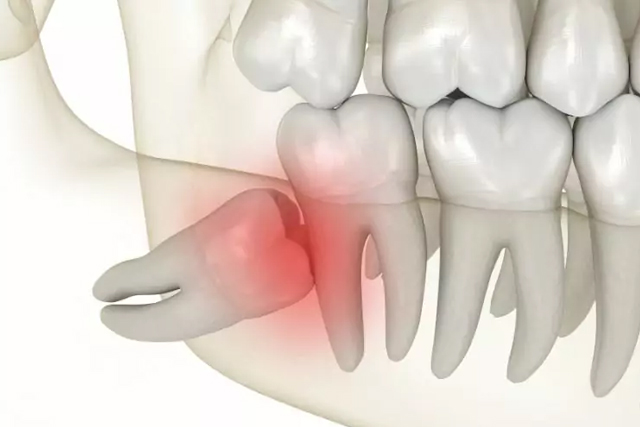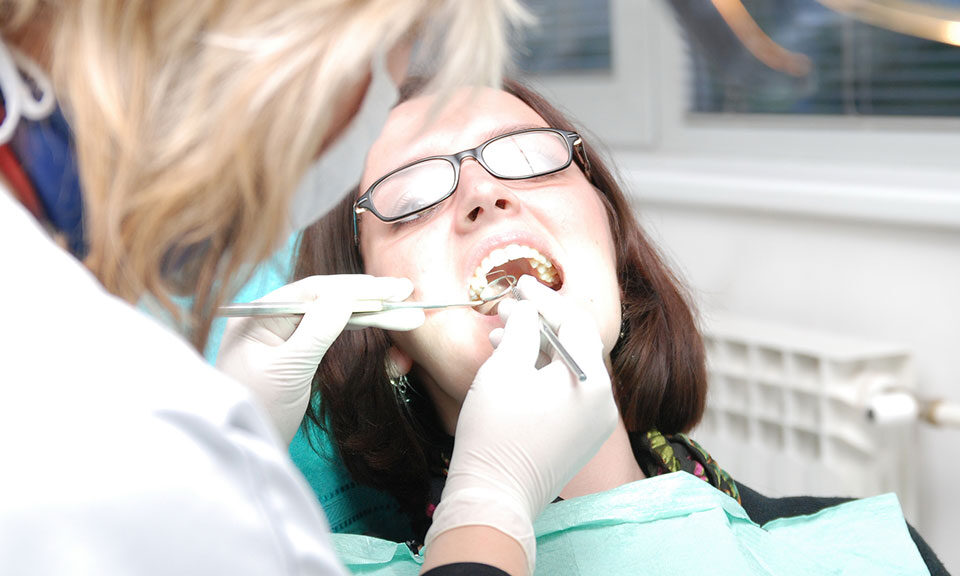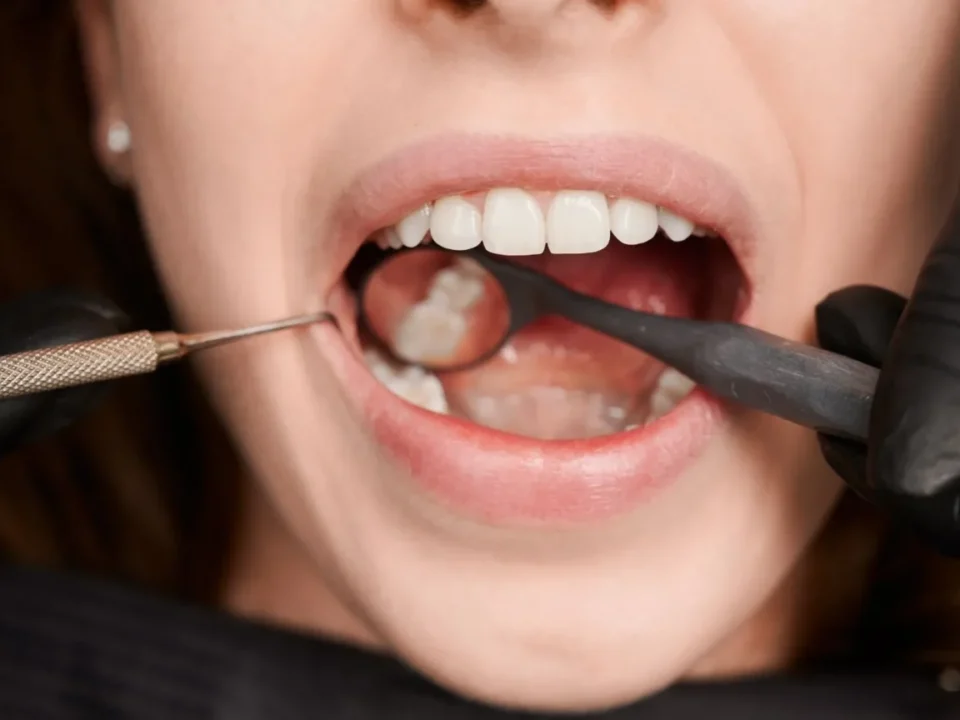
How to Enjoy a Holiday Dinner After Wisdom Teeth Removal?
December 15, 2024
Wisdom Teeth and Braces: Straight Facts You Can Trust
February 11, 2025
Table of Contents
ToggleWisdom teeth can feel like unwelcome guests at a family barbecue. They show up late, and sometimes they bring trouble. The third set of molars sits at the far back of the jaw. Many folks wonder why these teeth tend to wreak havoc. Jaw sizes are smaller these days, so there is less space for all four wisdom teeth to pop in and settle down. Some manage to fit without a fuss. Others get stuck partway or never break through at all. That’s when an impaction can happen.
What is an Impaction?
A tooth is impacted when it fails to erupt in a normal position. It might peek out a little, or it might stay hidden beneath the gums. This can lead to pain, swelling, and even infections around the area. It’s a bit like trying to park your car in a spot that’s half its size. No matter how hard you try, something ends up bent or squished.
Types of Impaction
There are four common impaction types. Each one has a unique angle and position. Some are mild, while others create more serious issues:
1. Mesial Impaction
This version tilts toward the front of the mouth. It’s often called an angular impaction since the tooth leans at a diagonal angle. Sometimes the tooth comes up enough to see part of it, and other times it stays under the gum. Dentists watch mesial impactions to see if they will cause crowding or pain.
2. Vertical Impaction
This is when the tooth points upright, lined up with the other molars. It just doesn’t break through the gum fully. Many vertical impactions aren’t big troublemakers. Some remain quiet for years. Wisdom teeth removal price might not be needed unless the tooth is pushing the one next to it.
3. Horizontal Impaction
This is often the most painful scenario. The tooth lies on its side, pushing into the adjacent molar. This pressure can trigger sharp pain, crowding, or damage. A surgical extraction is often the way forward. It’s hard for a tooth to stay healthy if it’s lying sideways in the gum. Imagine trying to sleep sideways in a tiny suitcase: something is bound to hurt.
4. Distal Impaction
This is an unusual angle that points toward the back of the mouth. It can be partial or full. The decision to extract depends on how far back it tilts. Some remain harmless if they don’t exert pressure on nearby roots or teeth.
Signs of Impacted Wisdom Teeth
Knowing when wisdom teeth are impacted can help prevent serious complications. Unresolved issues in the back of the mouth can lead to ongoing problems. Here’s what people often notice:
- Swollen, tender gums
The tissue around the tooth can become puffy, red, or sore. This might make brushing or chewing uncomfortable.
- Jaw pain or stiffness
An impacted tooth can put pressure on the jaw. This creates a tight or achy feeling that doesn’t always go away.
- Bad breath or unpleasant taste
Food and bacteria can get trapped around partially erupted wisdom teeth. That buildup produces foul odours or a bad taste.
- Swelling in the face or jaw
Some impacted teeth irritate surrounding tissue and lead to visible swelling in the cheeks or jawline.
- Difficulty opening your mouth
This doesn’t happen every time, though it does show up in cases where infection or inflammation is severe.
Causes of Wisdom Teeth Impaction
Evolution plays a role. Our ancestors had wider jaws and needed extra molars for chewing tough food. Over time, diets changed, and jaws gradually became narrower. That shrinking jaw space means the third set of molars has to fight for every millimetre. Genetics might also decide if a wisdom tooth has enough room to erupt. When space is limited, the tooth can tilt, stay sideways, or fail to emerge above the gumline. Gum tissue can also block the tooth. A slanted or sideways wisdom tooth might not erupt at all, forming a cyst or infection zone.
Risks of Impacted Wisdom Teeth
An impacted tooth sometimes behaves like a mischievous toddler who knocks things over without meaning to. It can disturb neighbouring molars, put pressure on their roots, and cause pain or damage. Gum infections, known as pericoronitis, often thrive around partially erupted Wisdom Teeth Sydney. This can lead to swelling, gum pockets, and possible jaw stiffness. There is also a risk of cysts or other growths in the jawbone near an impacted tooth. Tooth decay can happen too. Partially erupted wisdom teeth create pockets where bacteria party all day. Keeping that area clean becomes tricky, so cavities may form faster.
Practical Tips to Spot Trouble
A person might think everything is fine until the gum in the back of the mouth starts throbbing. Early detection can save a lot of trouble:
- Regular check-ups
Routine exams allow the dentist to spot a potential impaction before it turns nasty. X-rays reveal how the wisdom teeth sit in the jaw. Some worry about wisdom teeth removal cost. It’s normal to ask about expenses before committing. A quick chat with a professional can clarify what’s involved. Insurance might cover part of the procedure. If not, there are payment plans.
- Watch for subtle discomfort
That slight tenderness in the back of the mouth might be the first clue. If it lingers or gets worse, it could point to an impacted tooth.
- Check for crowding
If teeth at the back start feeling compressed or out of line, a hidden wisdom tooth might be the culprit.
When to Seek Help
Some wisdom teeth sit tight without causing harm. Others act out and create significant problems. Seek advice if there’s ongoing pain, gum swelling, or difficulty opening the mouth. A dentist or oral surgeon can advise on the best approach. Sometimes wisdom teeth removal Sydney is needed to stop infection from spreading or to free up space. An impacted tooth that doesn’t bother anyone may still require a watchful eye. Dental professionals keep track of changes by using routine X-rays.
Possible Solutions
Wisdom teeth removal near me is the most common solution for painful, impacted wisdom teeth. The dentist or oral surgeon accesses the tooth under the gum, removes it in sections (if needed), and cleans out the area. This procedure often involves sedation so the patient remains comfortable. Recovery might include swelling, mild discomfort, or stitches, but it typically resolves in a week or two. Pain medication and rest help with healing. Mouth rinses can keep the extraction site clean. Though extraction is a standard fix, each case is unique. Some partial impactions might improve with minor gum adjustments. Others might never require affordable wisdom teeth removal Sydney if they pose zero risk.
Final Thoughts on Impacted Wisdom Teeth
A pesky wisdom tooth can throw the entire mouth off balance. Spotting warning signs early is a great plan. Regular dental visits, X-rays, and open communication with a trusted professional keep everything under control. Pain, swelling, or crowding are signals that it’s time to talk to someone who knows teeth. Mesial, vertical, horizontal, or distal… each type has its quirks, and each one benefits from an informed approach.



